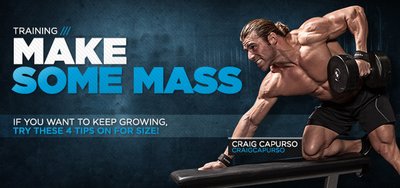I started lifting weights for athletic improvement and to get attention from girls, and not necessarily in that order. In my teenage lizard brain, I had to get big and strong quickly because time was precious in high school. As a result, I did some stupid stuff in the name of self discovery. Sound familiar?
I want to spare you my headaches and embarrassment by sharing my tips for harvesting maximum mass from your muscle-building program. Follow these four mass must-dos to get bigger and stronger, guaranteed—whether you're in high school or not.
1. Eat Until You're Stuffed. Then Eat More
If you try to get big on a calorie-restricted diet, you'll get tired fast and be left with smooth muscles and soft abs. For full muscles and noticeable gains, you must eat quality food as often as possible. That doesn't mean you should binge on Ben and Jerry's or pasta buffets. Splurging may work well for a teenager dripping in testosterone, but for people in their 30s or 40s, it means petty gains and regrettable digestion.

{{caption}}
Say you eat 1,800-2,000 calories per day on a typical diet comprised of 30 percent protein, 40 percent carbs, and 30 percent fat. To see gains, you'd need to increase your caloric intake by 10-20 percent and eat 2,200-2,400 calories per day. If the scale is stuck, increase your calories by 10 percent per week until your weight goes up.
Check out these daily calorie estimates (right image) for people who want to add mass to a lean frame. If you're bigger with more muscle, increase the numbers by 100-200 calories for optimal results.
Your primary foods should come from relatively lean meats, vegetables, legumes, and beans. Don't mistakenly skimp on carbs while trying to gain size! Your muscles store carbs as glycogen, which adds volume to your muscles and energizes your mass-gaining training sessions.
2. Track Your Progress
Recording every workout detail is more than OCD meathead accounting. It's how you judge progress in pursuit of your goals. Guessing doesn't work when you're hell bent on building mass.
Tracking doesn't have to be fancy, however. I get by with a small note pad and a chewed-on pencil. If you're beyond pen and paper, track your workouts on BodySpace and stay accountable to your goals simultaneously.
A simple layout to track your progress is to list exercises with sets, reps, weights, and relative effort needed to complete the given set on a scale from 1-10.
Example: Bent-Over Rows: 1 set of 15 reps with 135 pounds at 7.
When you do the same exercise later with similar variables and the difficulty feels like a 5, it's a good indicator to increase the weight. If the exercise feels like it went up to a 9 or 10 with the same variables, a deload may be in order.
3. Lift Heavier
Ditch the 3-sets-of-10-reps model and lift heavier weights in the 3-5 rep range. It might seem like less work, but you can add more sets to increase the volume and develop your musculature with more challenging weights.
You accumulate the same number of reps on 6 sets of 5 reps as you do on 3 sets of 10 reps. The key is to increase the weight by 25 percent on 6 sets of 5 reps.

{{caption}}
I used to work out for two hours and leave the gym exhausted. I couldn't recover before my next workout. I felt like crap and spun my wheels. Then I discovered powerlifting and Olympic lifting workouts, which brought great success. My lifts went up and I got thicker, denser muscles through my legs, back, and chest with considerably less time in the gym.
Muscles grow best when they exert more force, which means you should increase the load, velocity of the contraction, time under tension, or all three. Use compound exercises for a portion of your workout and watch serious gains appear!
Here's a sample program to reap benefits from heavier lifts in a three-day split routine:
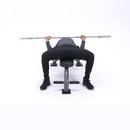
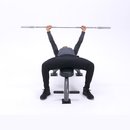

BodyFit
$6.99/month- 2,500+ expert-created single workouts
- 3,500+ how-to exercise videos
- Detailed workout instruction
- Step-by-step workout tips
- Training at gym or at home
- Access to Workout Plans
- Access to Bodyfit App
- Store Discounts
Already have a Bodybuilding.com account with BodyFit? Sign In

What comes with BodyFit?

- Instructional Videos
Don't risk doing a workout improperly! Avoid injury and keep your form in check with in-depth instructional videos.

- How-to Images
View our enormous library of workout photos and see exactly how each exercise should be done before you give it a shot.

- Step-by-Step Instructions
Quickly read through our step-by-step directions to ensure you're doing each workout correctly the first time, every time.
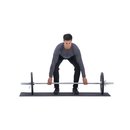
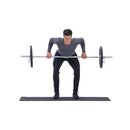

BodyFit
$6.99/month- 2,500+ expert-created single workouts
- 3,500+ how-to exercise videos
- Detailed workout instruction
- Step-by-step workout tips
- Training at gym or at home
- Access to Workout Plans
- Access to Bodyfit App
- Store Discounts
Already have a Bodybuilding.com account with BodyFit? Sign In

What comes with BodyFit?

- Instructional Videos
Don't risk doing a workout improperly! Avoid injury and keep your form in check with in-depth instructional videos.

- How-to Images
View our enormous library of workout photos and see exactly how each exercise should be done before you give it a shot.

- Step-by-Step Instructions
Quickly read through our step-by-step directions to ensure you're doing each workout correctly the first time, every time.
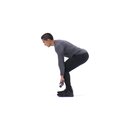
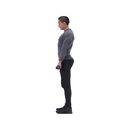

BodyFit
$6.99/month- 2,500+ expert-created single workouts
- 3,500+ how-to exercise videos
- Detailed workout instruction
- Step-by-step workout tips
- Training at gym or at home
- Access to Workout Plans
- Access to Bodyfit App
- Store Discounts
Already have a Bodybuilding.com account with BodyFit? Sign In

What comes with BodyFit?

- Instructional Videos
Don't risk doing a workout improperly! Avoid injury and keep your form in check with in-depth instructional videos.

- How-to Images
View our enormous library of workout photos and see exactly how each exercise should be done before you give it a shot.

- Step-by-Step Instructions
Quickly read through our step-by-step directions to ensure you're doing each workout correctly the first time, every time.
4. Get a Coach
It's better to have someone provide an external frame of reference to make adjustments. I didn't have much coaching when I grew up. I found spotters, but nobody said to pack my shoulders back and down to bench press, take a wider squat stance, or that deadlifts shouldn't hurt my back.
A coach can be a training partner who helps to adjust weight on the bar or a highly qualified trainer who builds every aspect of your program. It helps to have someone take the guess work out of your programming.

{{caption}}
Some things to consider when looking for a good coach:
How much time they spend to get an understanding of your goals versus trying to get you signed up for training.
How much they coach you to execute movements properly versus just getting you to move.
Whether they give you homework when you're not training with them. If they only provide workouts when you're training with them, it's to keep you coming back, which may not be feasible or affordable.
Whether they provide nutritional counseling, understand how to work around or through common injuries or posture problems, and know how to adjust a workout to your specific capabilities.
Get Growing
Training for size and strength gains takes more science than many understand. Treating it with the respect of a dutiful scientist requires you to recognize mistakes quickly and adjust efficiently to continue progressing. Start with the four tips above to build a solid foundation!


